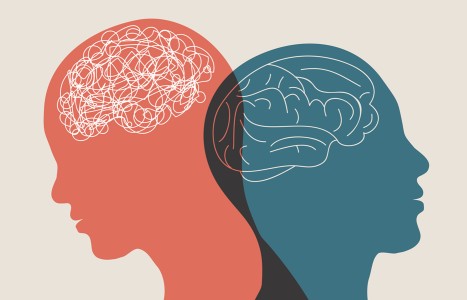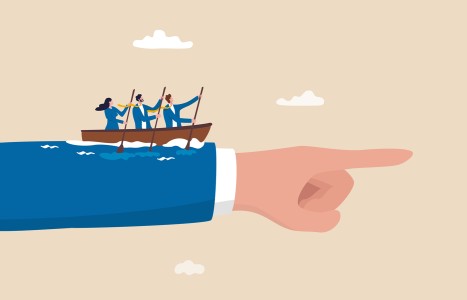Consequences for HIPAA violations can often be quite harsh. If someone has breached the HIPAA privacy regulations – even without any malicious intent, civil penalties are applicable: $100 per violation for unawareness, a minimum of $1,000 for reasonable cause, a minimum of $10,000 if willful neglect is present and then rectified, and finally, a minimum of $50,000 for individuals who act with willful neglect and ignore the issue.
| Digital ExclusiveOn the Road With Asian Bodywork Therapy
I'm in Rome trying to change Swiss Francs into Euros at a bank. Ever mindful of money laundering, the teller says, "American passport? Why do you have Swiss Francs?"
"Because I teach in Switzerland."
"What do you teach?"
"Shiatsu."
The teller clutches her neck. "Ohh, my neck is killing me. Can you help?"
Moments later, I'm behind the counter thumbing key points like UB 10, GB 20 and GB 21, while offering her advice about repositioning her computer monitor at eye level and moving her mouse to the opposite side.
I also thumb down back shu points, and demonstrate some useful shoulder rolls and stretching exercises she should repeat several times a day, even while at her desk.

My Italian friends suggested she was really just testing me to see if I was telling the truth about my work. But when I touched her shoulders as she sat in her swivel chair, I could sense her pain was genuine.
"Mille grazie" [a thousand thanks] followed me as I left the bank later!
An unusual request? Not at all. Once folks know we are bodyworkers, there's no end of street requests, I tell my students.
I recall another moment in a doctor's waiting room when a visibly distressed young patient came out of the exam room unable to exhale as she waited for an asthma medication to kick in. Concerned about the impact she was having on everyone else in the waiting room, I quietly moved behind her chair, lowered my hands to her shoulders and just explained this was a simple exercise to help her breathe. Then I reached over and held Lung 1 points. Her breathing resumed in seconds.
I showed her something I learned from an asthmatic buddy of mine who would cross her arms, slide her hands under her armpits and press Lung 1 with her thumbs each time she had difficulties exhaling. I was very conscious of talking softly and moving with subtle qi in order to calm the unrest in the waiting room.
Diodes, Anyone?
I also travel with my kit of electronic diodes – the economic, no-nonsense alternative to ear magnets or seeds. Diode therapy jumped out of Japanese medicine just a few decades ago, one of the easiest therapies we can use and also teach our clients for pain control. The silicone center of the diode has a black line and we always point that toward the heart.
We curl the thin metal parts into tiny spirals, to be able to tape the diode comfortably and safely on an acupoint or ashi point. The diode needs to be exposed to light, ideally the sun, or a flashlight if applied in the dark.
Typical and favorite uses? Sp 6 and ST 36 for menstrual pain; San Jiao 23 for parietal headaches; LI 4 for constipation; P 6 for nausea, travel sickness and especially chemo-prompted nausea.
Lise Ste Marie, MD, one of my graduates in Montreal, discovered a really unusual benefit when she encircled a patient's shingles rash with a number of diodes to reduce the pain.
I also found diodes worked beautifully with "Tommy J,"* a boy of 10 who experienced allergy headaches. I showed Tommy how to apply diodes to various points on his forehead, being very careful to tape them well to avoid contact with his eyes.
"Cool," Tommy grinned. It made him feel like a character in Star Wars and he couldn't wait to show his friends.
Dr. Tobias and His Music
During my time in Zurich, "Tobias,"* an MD friend of one of my graduates, consulted me about the ringing in his ears. He'd experienced unsuccessful sessions with ENT specialists at the medical school, who told him the problem just reflected stress. Tobias was desperate and open to trying anything to relieve the annoyance.
I talked to Tobias a lot about his intensely busy practice as a PCP; he admitted he sometimes felt overloaded and overwhelmed listening to his patients' problems. To relax, he played the violin in a local quartet.
My first session aimed at calming his UB meridian with subtle stretches to ease his high stress levels. I performed careful neck and shoulder work with barely any movement. I focused on GB 20 and 21, UB 10 and DU 20.
Then I performed an off-the-body technique I have found most helpful in similar cases. I place my hands on either side of the client's head and point my fingers toward the ear canals to project an imaginary horizontal line of qi between my fingertips. When I feel a strong connection, I move my fingertips away, honoring the horizontal line, as though releasing stagnant qi.
In this case, just those simple techniques reduced the ringing to a subtle hum. I taped diodes on SI 19, and taught Tobias how to do this for himself. I advised him remove the diodes after a day or so and replace new ones with fresh tape. (Yes, the diodes can be used more than once. Some of my graduates tell me they soak them in sea salt before using them again to remove disturbed qi.)
Music to My Ears!
As Tobias was also a passionate violinist, I knew there was more we could achieve with the water element when I saw him again before I returned to the U.S. I suggested he should take long, hot baths, and experiment by listening to his favorite classics as he bathed, to see which specific harmonies neutralized the ringing in his ears. This blended so well with him culturally.
Tobias found different quartets, arias and single instruments worked alternately on different days to subdue the ringing to a level he could barely notice. He sent words of appreciation to me after I left Zurich and assured me he was also working on reducing his long working hours.
*Editor's Note: Names in this article have been changed to protect identities.



